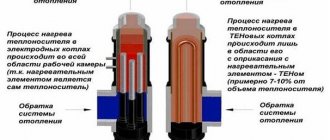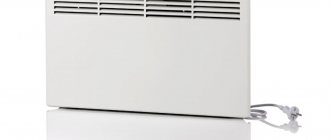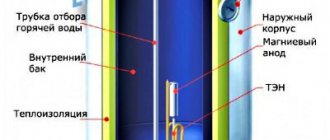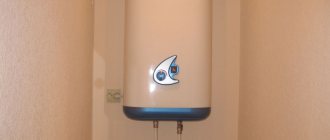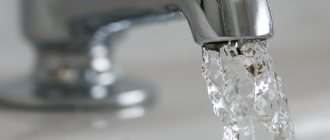In a house where there is no hot water supply, a boiler is usually installed. You can install the water heater yourself or with the help of a specialist. Before purchasing a device, you should find out more about the types of boilers, power and sizes. In this article we will look at ways to calculate the amount of hot water consumed per day and month.
Types of boilers
There are several types of water heaters:
- Flow-through. The boiler body is made of plastic and also has a built-in heating coil, which is attached to the mixer. Water heats up to 45-50oC, passing through the spiral. The lower the speed of water movement, the higher its temperature. The instantaneous water heater is perfect for country houses.
- Cumulative. The device has a storage tank in which a spiral is arranged. When the water in the tank cools down, the heating function turns on automatically. Thus, a comfortable temperature is always maintained. It takes a long time for the water to cool down, since there are layers of insulation inside the boiler. The storage water heater is suitable for year-round homes. Depending on the number of people in the family, you can choose a boiler of a suitable size.
A flow-through and storage boiler consumes an approximate amount of electricity. The only difference is that the first heats the water if necessary, and the second maintains a certain temperature around the clock. When using a flow-through boiler, you can see large voltage surges in the network.
Boiler power

This parameter is considered one of the main ones when choosing an electric heater - the normal operation of the electrical network in the apartment depends on the power, since not every wiring is capable of supporting devices with high voltage. The speed of heating water to the specified temperature also depends on this.
The performance of the boiler is determined by the heating element, which ensures that the device performs its main function. The principle of its operation can be compared to an electric kettle: the more powerful the heating element, the faster the water will reach the set temperature.
The performance of the water heater ranges from 1.5-27 kW and depends on its type. They are:
- flow-through;
- accumulative;
- combined.
The latter type is suitable for houses and apartments with an individual heating system, since during operation of a heating system based on a single-circuit boiler, the water in the combined appliance will be heated without connecting to the electrical network. The rest of the year it works from a wall outlet.
To choose the right boiler, you need to take into account the most frequently used water intake points. So, for washing dishes you need a heating element of 6-8 kW, for a shower - 12-16 kW.
Protochny

Instantaneous water heaters are distinguished by their compact size and instant heating of water. This is ensured by direct contact of the liquid from the water supply with the heating element.
Such devices are often placed in apartments where there are interruptions in the hot water supply or where there is no hot water supply. To use a warm stream in several places, for example in the shower and in the kitchen, you need to choose a boiler with the appropriate performance.
The power of flow heaters varies from 3 to 27 kW. Boilers with a power of 3-8 kW are capable of heating up to 6 liters of water per minute, which completely covers the needs of a family of 3-4 people.
However, it should be taken into account that in a standard apartment with a single-phase voltage of 220 V it is impossible to install equipment with a power of more than 5 kW - the wiring will not withstand it.
If we are talking about a private house, where the power supply reaches 380 V, then you can purchase more powerful models.
Cumulative
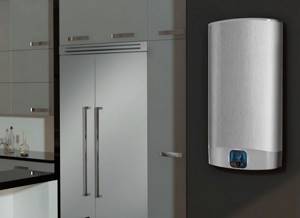
Storage devices are large in size, as they contain a tank for storing heated liquid. The principle of its operation is as follows:
- The boiler fills the tank, turns on the heating and turns off automatically after reaching the set temperature.
- When you open the tap, hot water flows into the faucet or diffuser in the shower.
- As the container empties, it is refilled with cold liquid and the boiler is turned on again to heat it up.
The main disadvantage of storage water heaters is the long wait for the liquid to heat up. The speed depends on the power of the device and the volume of the tank.
The average boiler, which is suitable for any apartment, consumes from 1.5 to 3 kW. With this performance, 30 liters of water will heat up in 1-1.5 hours, and 120 liters in 4 hours.
Calculation of the consumed amount of hot water per day
The cost, size and power of the boiler depend on this indicator. For a family with one child, at least 25 liters are consumed per day. This indicator includes: washing dishes and hands, hand washing and a light shower. If there are two children in a family, up to 250 liters are consumed per day. This may include: taking a bath, operating the washing machine, as well as wet cleaning. Such calculations are approximate, as they are based on customer reviews. The exact data can be found by installing a meter. The total figure should be divided by the number of days. This will give you the water consumption per day. Therefore, it is possible to determine which boiler is the most economical.
Let's consider an example of calculating the consumption of hot water for three people. On average, a family consumes about 70 liters of water per day. The temperature in the boiler can heat up to 90 degrees, and in the central water supply - up to 60 degrees. Thus, the hot water in the boiler mixes with cold water and produces more warm water than necessary. Therefore, it is recommended to buy a boiler with a volume of 40-50 liters.
Types of water heaters
The amount of electricity consumed directly depends on the operating principle of the boiler. Heating technology is divided into two types:
- Cumulative. Includes a metal tank of any volume. Water accumulates inside, which is heated by a heating element. To save resources, the liquid is heated to a certain temperature, after which the device turns off. A sensor is provided to maintain the values. It reports a decrease in temperature, and the heating element turns on again.
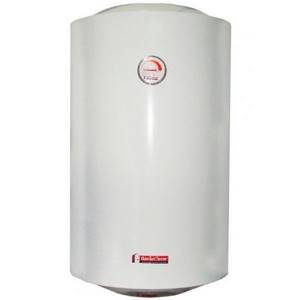
- Flow-through. Does not have a tank. Water circulates through the pipes and enters the heater. Passing through it, the liquid reaches the desired values. Energy consumption for heating water depends on the inlet temperature.

It is believed that flow-through devices consume more electricity, because their heating elements have more power. But unlike storage boilers, flow tanks are turned on only from time to time.
To choose the right equipment and not pay bills for consuming extra resources, find out how much the device “pulls” per day. It is good if a meter is installed in the house. Then it is enough to divide the readings for the month by the number of days. This will be the amount of energy that your family needs.
How much electricity does an average boiler consume?
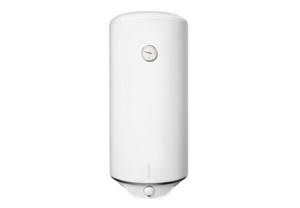
The water heater is accompanied by technical documentation, which indicates all equipment values. To calculate electricity, we take the average value. To do this you will need the following values:
- The number of kilowatts that the water heater consumes while heating and maintaining the water temperature;
- The volume of hot water consumed per day in liters or cubic meters.
Let's consider an example for a boiler with a volume of 50 liters. First of all, you should determine how long it takes to heat up the water in the water heater. The minimum temperature is usually 70°C. It takes approximately 2 hours to heat the water to the desired temperature. To maintain a comfortable temperature, the heating cycle occurs 2 times a day for 2 hours. The technical documentation indicates electricity consumption during operating mode: 2 kW per hour. Based on the calculation, we get 4 kW per day.
In addition, do not forget about the “Heating” mode. 4 kW needs to be divided by the number of hours that are not involved in heating water. Thus, 4 kW/12 = 0.3 kW per day. The total amount of electricity consumed by a 50 liter boiler: 4+0.3 = 4.3 kW. 129 kW is consumed in 30 days. To calculate the cost of payment, you need to know the tariffs for each region.
Instantaneous water heater capacity for 50, 80, 100 liters for shower/bath
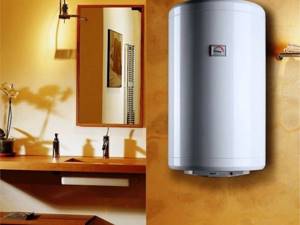
Boiler in the bathroom interior. Compared to instantaneous water heaters, it requires more space
The selection of devices according to technical parameters is important from the point of view of the ability to provide all the hot water needs of the household. Depending on the tasks facing the devices, they are selected according to their technical characteristics. So it is recommended to choose an electric boiler depending on the tank capacity:
- For a 50-liter device, it is reasonable to use it as the main source of hot water for washing dishes, hygiene procedures and showering. Recommended for use by a family of 2-3 people.
- A volume of 80 liters can satisfy the basic needs of a family of 3-4 people, provided that the bath is taken no more than once a week, and the rest of the days the shower is used.
- A family of 2-3 people can count on the volume of a 100-liter boiler, provided that all the necessary needs for hygiene procedures are fully met.
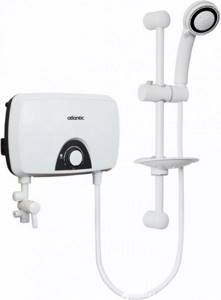
For an instantaneous water heater, throughput and performance are important characteristics.
For an instantaneous water heater, in addition to the power consumption indicated in the passport, an important characteristic is throughput and performance. When selecting instantaneous water heaters, you should pay attention to the performance of the devices:
- A throughput of 1.8-3 liters per minute with a consumption of 2-2.4 kW is enough to heat water for washing dishes in the kitchen;
- A throughput of 3-4 liters per minute at 3-4 kW will ensure work in the kitchen and washing, shaving;
- A throughput capacity of 4-6 liters with a power of 7-9 kW will allow you to take a shower comfortably;
- A throughput capacity of 6-10 liters per minute with a power of 10-16 kW makes it possible to provide all the hot water needs of a household.
Thus, the optimal performance of an instantaneous water heater for a shower or bath is an electric heater power of 10 to 16 kW with a capacity of 6-10 liters per minute.
How much electricity does a large boiler consume?
For a large family of 4 people, a water heater with a capacity of 100 liters is suitable. From the previous calculation we learned that the boiler consumes 2 kW per hour. But a water heater of this volume heats water in about 3 hours. Thus, 3 cycles occur per day. Consequently, the boiler consumes 6 kW per day. The monthly consumption is 180 kW. Electricity tariffs vary depending on the region.
When using a boiler, you should consider the following nuances: when the mixer is turned on frequently, cold water enters the water, due to which the temperature decreases. The temperature sensor reacts to a decrease and automatically turns on the “Heating” function, so more electricity will be consumed.
In areas where power is often cut off, the best option for heating water would be to install a storage boiler. This type of water heater retains heat for a long time.
How maintaining temperature saves energy
All models of storage devices are equipped with this function. Through the mechanical or electronic control panel of the water heater, the user sets the desired temperature. After turning on the heating element, the water begins to heat up. As soon as it reaches the desired temperature, the thermostat is activated, which stops the operation of the heating element. When water is consumed from the tank, cold water enters it again and mixes with hot water. In this case, the thermostat turns on the heating element again to heat the liquid.
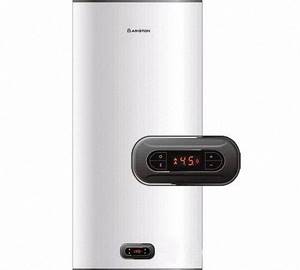
If water from the tank is not consumed, then with the help of automation the water heater maintains its temperature set by the user. During the process, the heating element turns on and off. This function does not consume a large amount of electricity, only a few kW per day. Since the walls of the tank have a thermal insulation layer, heat loss occurs very slowly: in an hour the water cools by 1-2 degrees.
According to experts, in order to save money when using storage water heaters, it is necessary to keep them in “standby” mode, and not disconnect them from the network each time. Since much less electricity is spent on maintaining the temperature than heating cooled water.
The power of water heaters depends on their type. Flow-through devices consume more electricity, but they outperform boilers in terms of performance and price. Storage tanks require a certain time to heat water, but they are more economical to operate, especially if you do not turn them off and use the temperature maintenance mode.
Is a tankless water heater profitable?
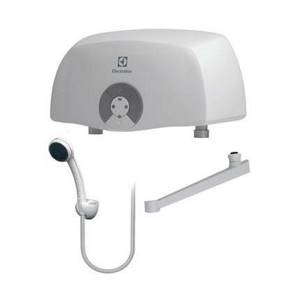
Instantaneous water heaters are most often used to heat water in country houses. Such equipment is easy to install yourself. The main disadvantage of instantaneous water heaters is their short service life - 5 years.
The water heats up as water enters. The power of the device does not depend on water pressure. Typically, a water heater provides warm water that you can use to wash dishes or take an outdoor shower. Due to some features, such a device is not suitable for taking a bath. It is recommended to install an electrical plug, socket and separate electrical cable. This is necessary in order not to reboot the main network.
A instantaneous water heater can have a power of 3-27 kW. For two people, a 10 kW device is suitable. For a large family, it is better to choose a water heater with a capacity of 20 to 25 kW.
Before purchasing, you should read the instructions, since some water heaters require a voltage of 380 V. If you nevertheless decide to connect the device to a 220 V network, then the electrical plugs in the meter will be knocked out.
The instantaneous water heater must be grounded, as it is installed on a metal mixer.
How to save on a water heater: how many kW does a water heater consume per month
In the matter of saving electricity, one cannot do without making calculations and drawing up an approximate schedule of daily consumption. For storage systems, the following is taken into account:
- Heating tank volume;
- Passport data of the power consumption of the heating element;
- Heating time to the set temperature;
- The temperature of the supplied water from the water supply system.

For modern boiler models, electricity consumption is indicated in the passport data
For modern boiler models, electricity consumption, depending on the set heating temperature, is indicated in the device data sheet, while manufacturers take into account the maximum daily hot water consumption.
To calculate the total energy consumed by flow devices, the following is taken into account:
- Device performance;
- Operating time in a daily cycle;
- Temperature of heated water;
- Cold water supply temperature.
It is worth noting that modern models with intelligent control systems are not only more economical compared to models 5-7 years ago, but also make it possible to maximally meet all household needs for hot water, depending on the consumption cycle. This applies equally to boilers with heating tanks and instantaneous heating devices.
A properly organized daily cycle of hot water consumption and setting the correct settings for the heating element will help you save the maximum amount of kilowatts of electricity. The list of factors that reduce energy consumption should include:
- Saving mode for everyday use - it is reasonable to inculcate the habit of washing your hands with cold water, doing morning toilet activities such as shaving not with the jet on, but using a cup or ladle;
- Wash dishes immediately after eating, when food residues are easily washed off, but if this is not possible, then first soak the dishes in cold water;
- Washing vegetables should be done in a saucepan, having first filled it with water, and do not simply flush the water down the drain;
- For boiling, use a small volume of water needed for one or two servings of tea or coffee; do not fill the kettle to brew one cup;
- For daily water procedures, it is recommended to use a shower, which will take 30-40 liters, rather than a full bath with 140-150.
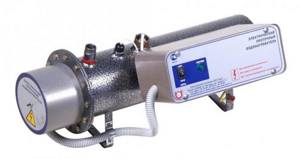
It is recommended to use an instantaneous water heater for domestic needs (washing dishes, for example) to reduce electricity consumption
But as regards specifically regulating the performance characteristics of boilers and heaters, the following measures are recommended:
- Set the maximum temperature in the tank at 35-40 degrees;
- For a flow-through heater when cooking and washing dishes, heating up to 40 degrees is sufficient;
- To take a shower or fill a bath, a temperature of 45-50 degrees is sufficient;
- Set a daily timer for the storage device with the heating function turned off at night;
How much energy does a tankless water heater consume?
For calculation, we take the same indicators: water consumption per day is 50 liters. Let's consider the performance of the device: the power of a simple water heater is 4 kW/h, so 2 liters of warm water can be produced per minute. It takes 25 minutes to heat 50 liters of water. Electricity consumption per day will be as follows: 0.42*4 = 1.68 kW. The water will heat up to approximately 50°C. 50.4 kW is consumed per month. This figure is much less than that of a storage boiler. But it is worth considering that the heating temperature is much lower for an instantaneous water heater. Thus, such a device for heating water will cost much less. Many people claim that instantaneous water heaters consume more electricity than storage ones. Based on the calculations, we can conclude that this is not the case.
Using a mathematical equation, you can express the calculation formula: divide the amount of water by the throughput and multiply by the power and get the indicator per day.
When using a boiler, do not forget about the safety rules: do not touch the device connected to the network with wet hands, and also do not wipe the surface of the device with a wet cloth while it is operating.
How to calculate the available water heater power for your home
First of all, you need to find out what power the home electrical network is designed for. Here it is also worth considering the simultaneous consumption of electricity by other devices. It is not possible to turn off all the electrical equipment in the house every time to heat the water.
Quite often, the possibilities of residential wiring are quite modest and do not exceed 10 kW. Therefore, in such a room it is impossible to install a powerful instantaneous water heater, since the circuit breaker will trip every time. But it will be possible to use a small-volume storage boiler, the heating element of which is designed for 1.2 - 2.5 kW.
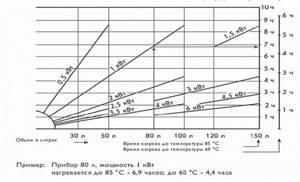
Before purchasing such electrical equipment, you need to find out the availability of kilowatts for use in your apartment or house. Afterwards, from the total number you should subtract the power of those devices that will somehow work simultaneously with the water heater. For example, refrigerator, free-standing freezer, TV, computer, kitchen appliances (which are often included). The result is power that can be used to operate a storage or flow-through device for heating water.
